PS5 SSD Upgrade Temperature Testing: Do You Even Need a Heatsink?
Thermal Results (Max and AVG) - Write Operations
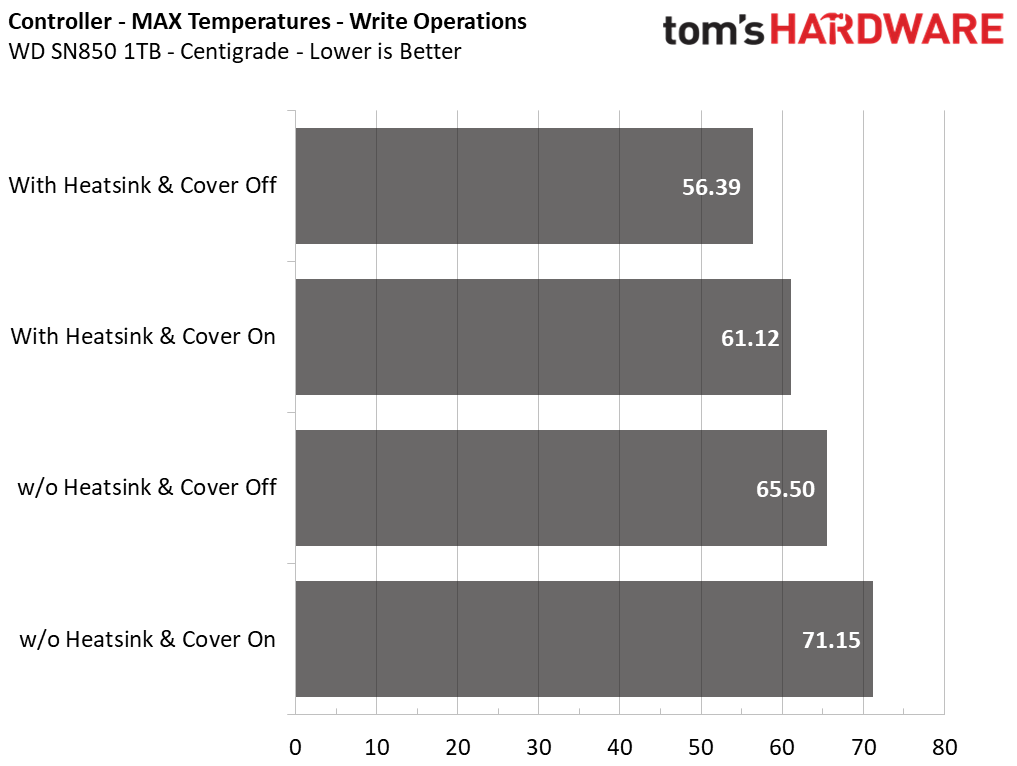
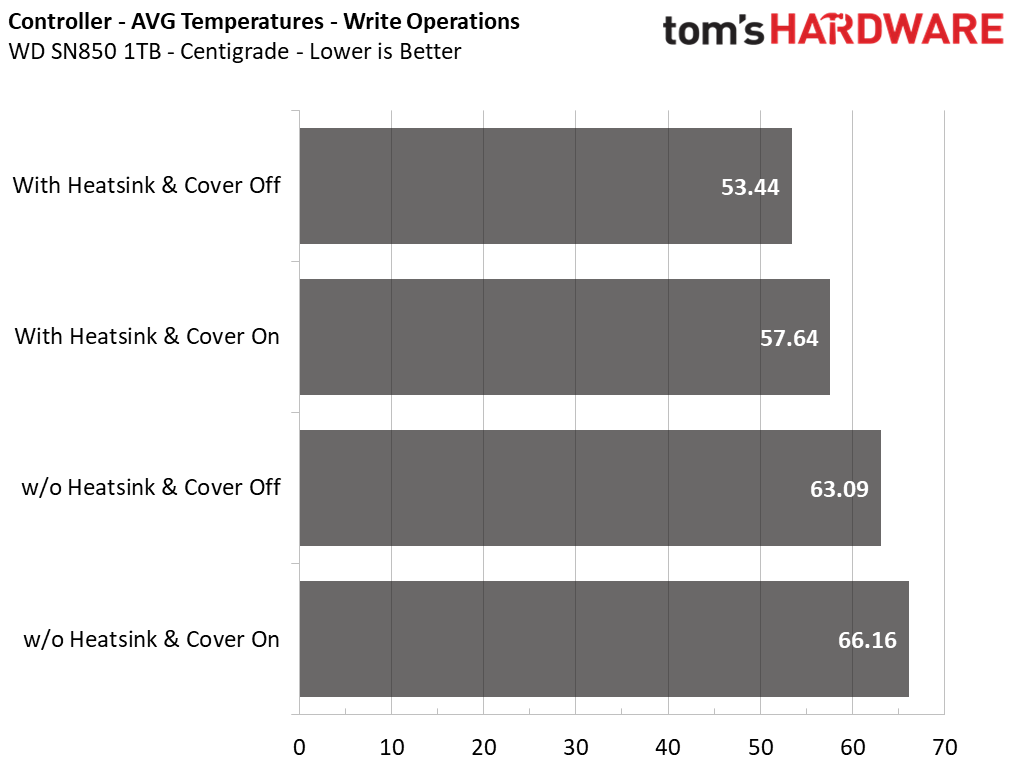
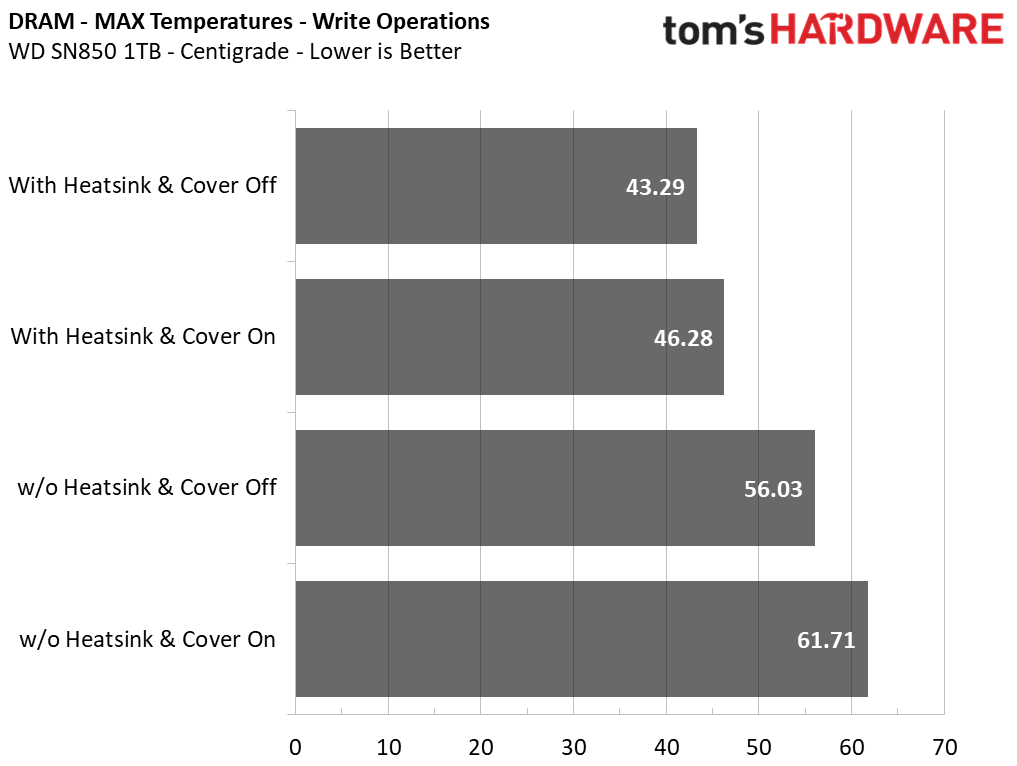
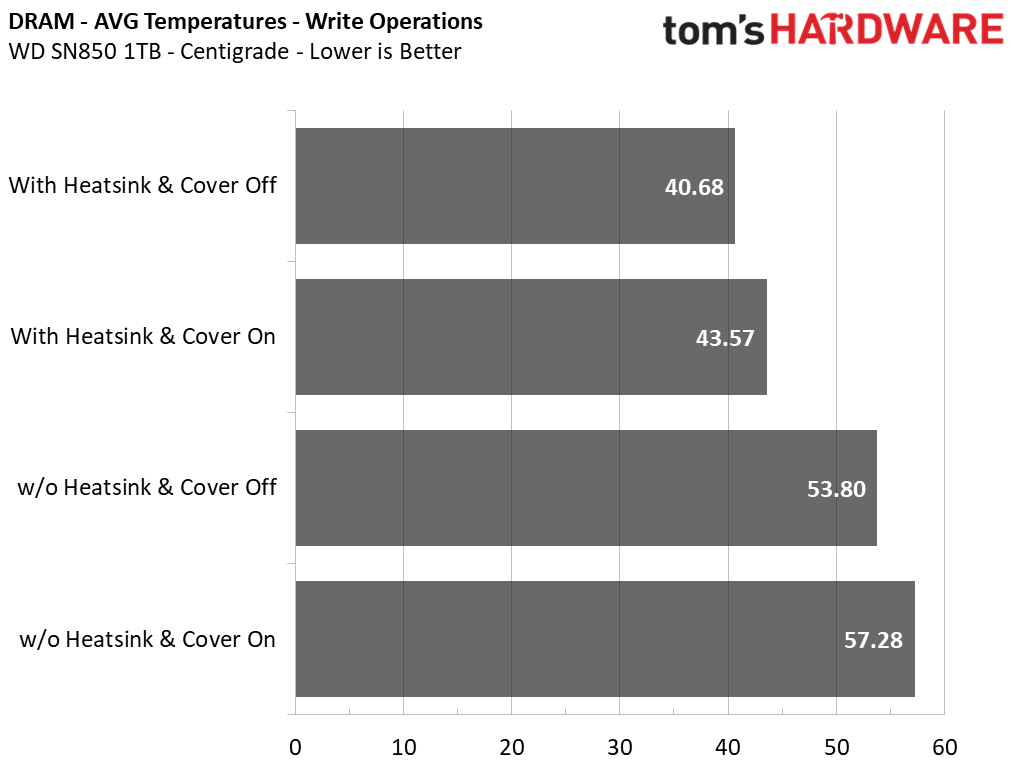
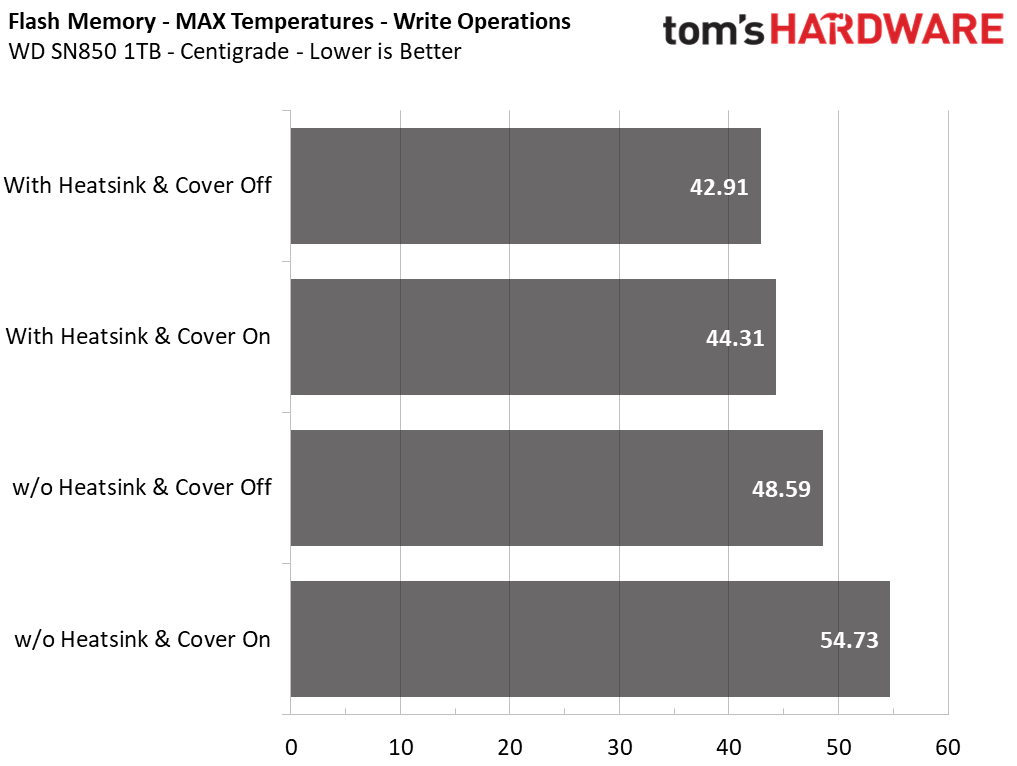
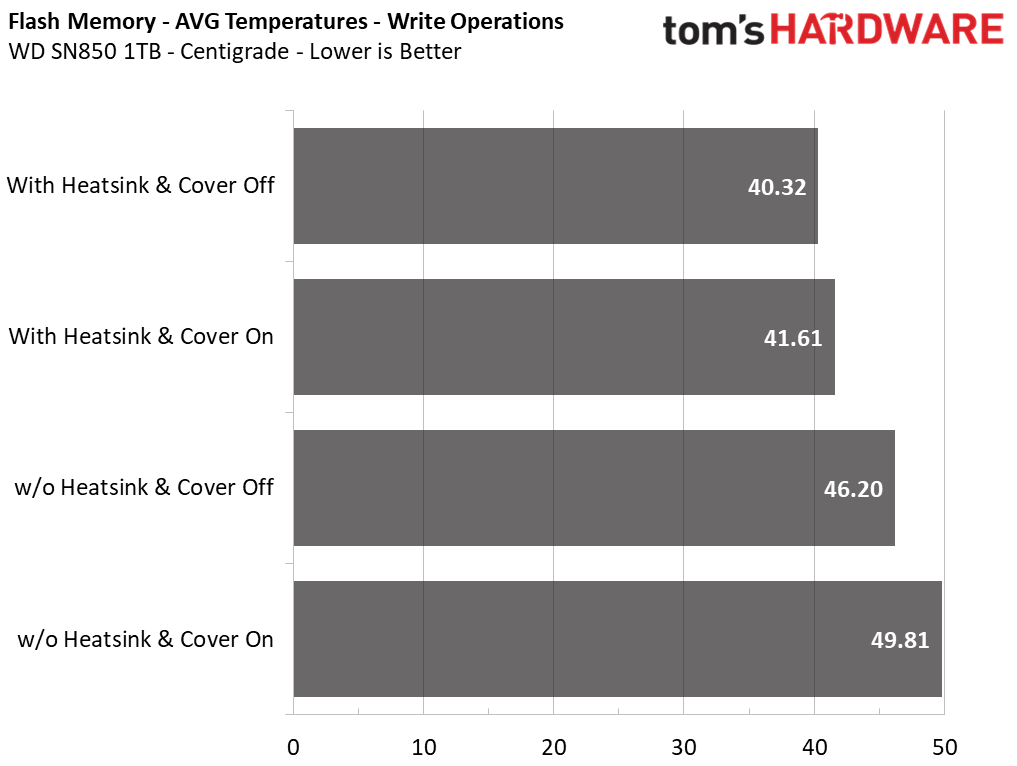
As expected, the worst scenario is without a heat sink installed on the NVMe SSD and with the cover in place. The max temperature exceeded 71 degrees Celsius in this scenario on the controller. Without a heat sink but with the lid off, the maximum temperature dropped significantly.
The best scenario, in general, is with a heat sink and without the SSD cover. In this scenario, the difference in max temperatures in the controller is close to 15 degrees; in DRAM, it reaches 18.4 degrees and, in Flash memory, it is 11.8 degrees.
Thermal Results (Max and AVG) - Read Operations
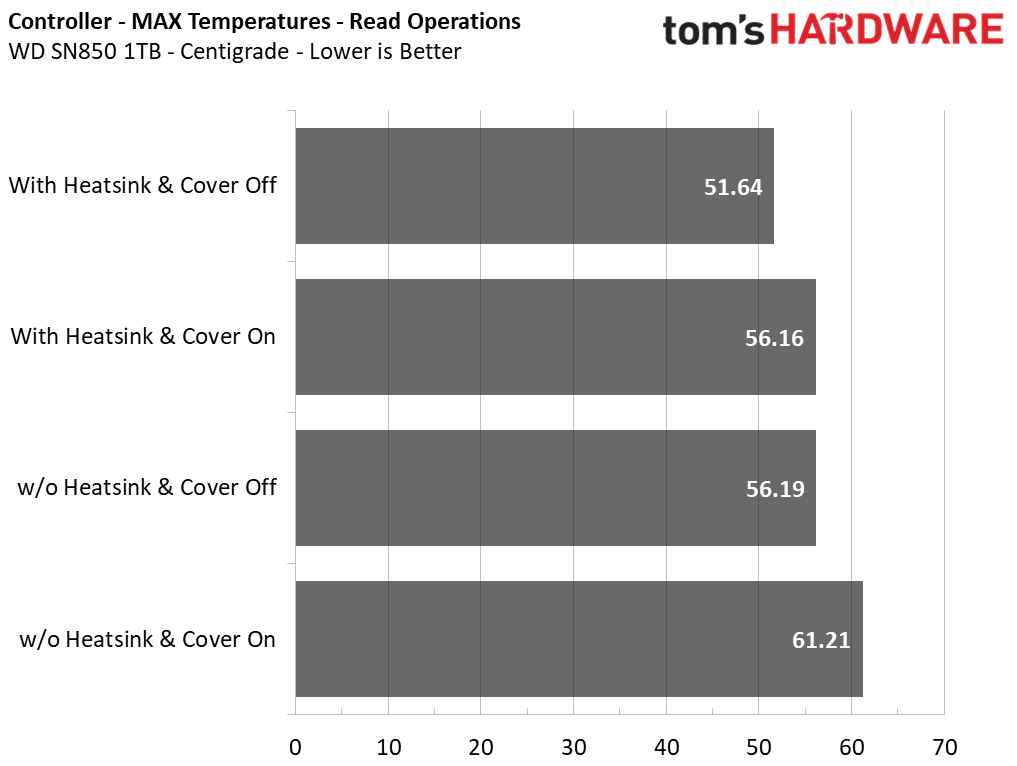

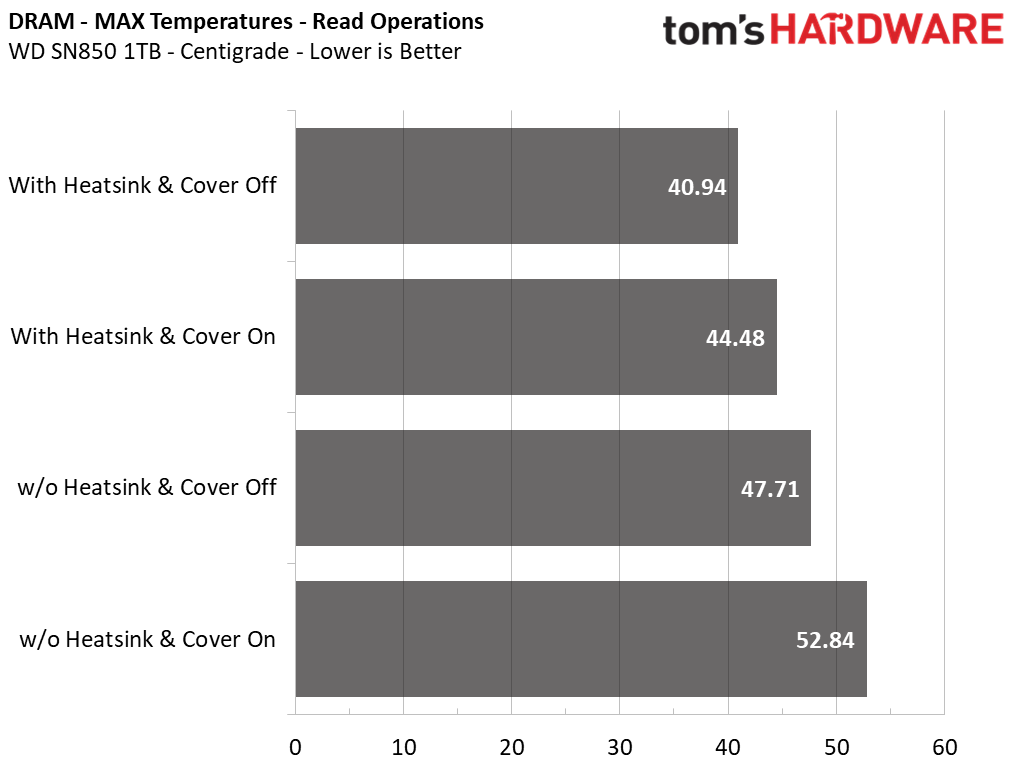
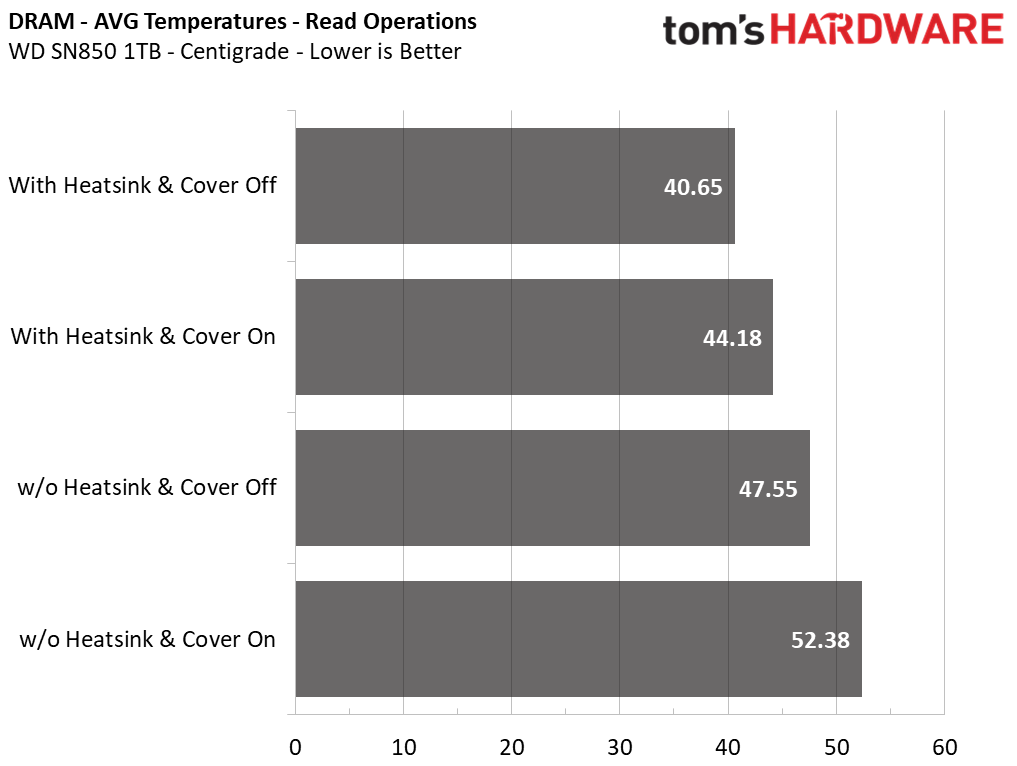
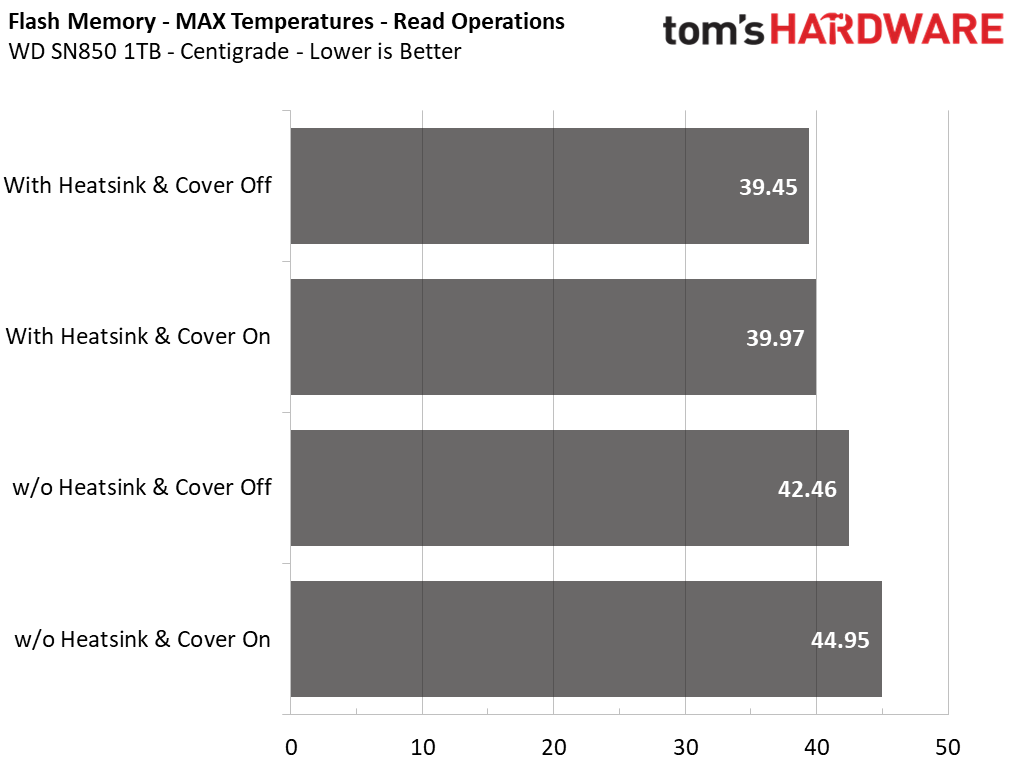
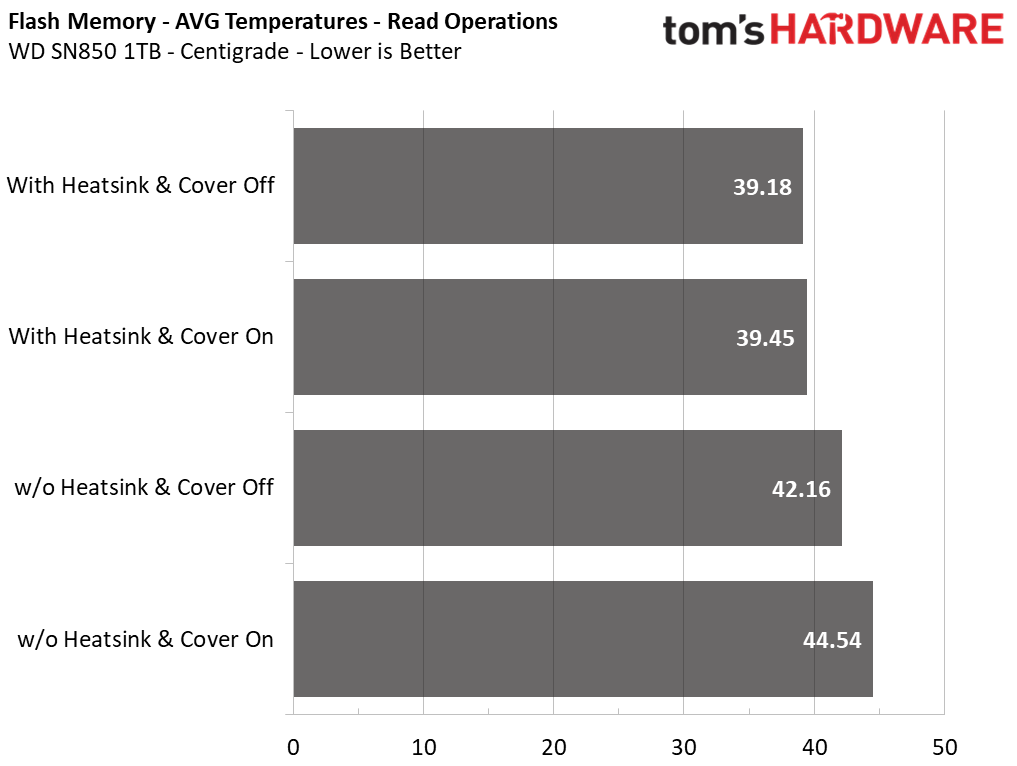
Read operations don't stress the SSD as much as writes. Hence the operating temperatures are lower. Moreover, once you install a game on the NVMe SSD, write operations will be minimal, and this is why Sony lists a requirement for read speeds and not for write ones. Similar to the write operations, the removal of the cover brings a notable drop in the operating temperatures of the NVMe drive.
Again the best scenario is with a heat sink and the cover removed, allowing a 9.6 degrees lower max temperature on the controller, 11.9 degrees less on DRAM, and 5.5 degrees lower max temperature on the flash memory.
Transfer Speed Results
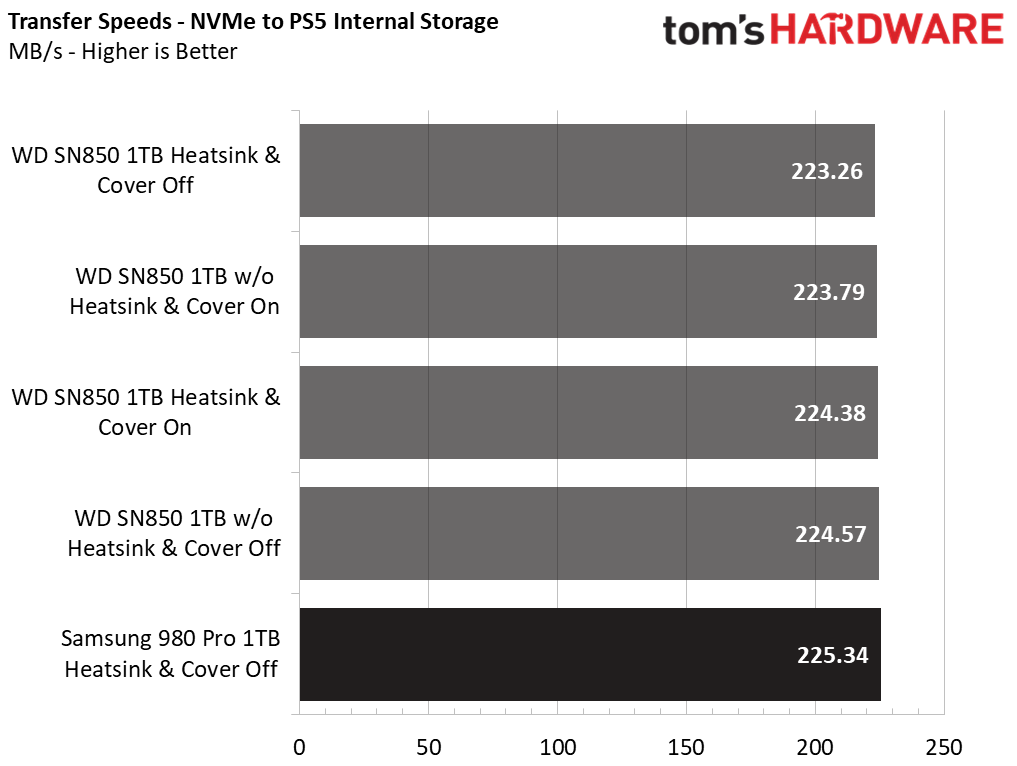
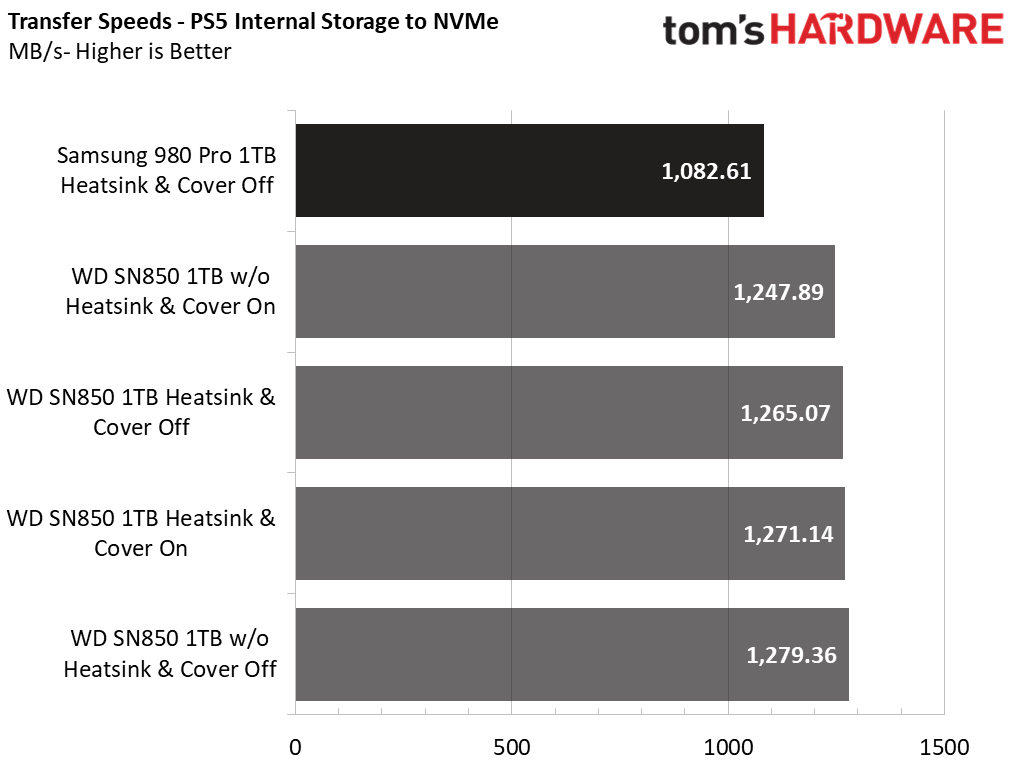
Since we already drew our conclusions with the WD drive, there was no need to repeat all thermal tests with the Samsung drive, so we only evaluated the latter on write and read speeds with a 10mm heat sink attached and without the SSD cover, which couldn't close either way.
Data transfer speeds from the PS5's internal storage to the NVMe are notable slower than the WD drive, but the transfer speeds from the NVMe to the PS5's internal storage are around the same. Most likely, PS5's internal drive sets the limitations here. In any case, the WD Black SN850 is faster for PS5 use than the Samsung 980 Pro, although both have the same read and write speeds on paper.

Conclusion
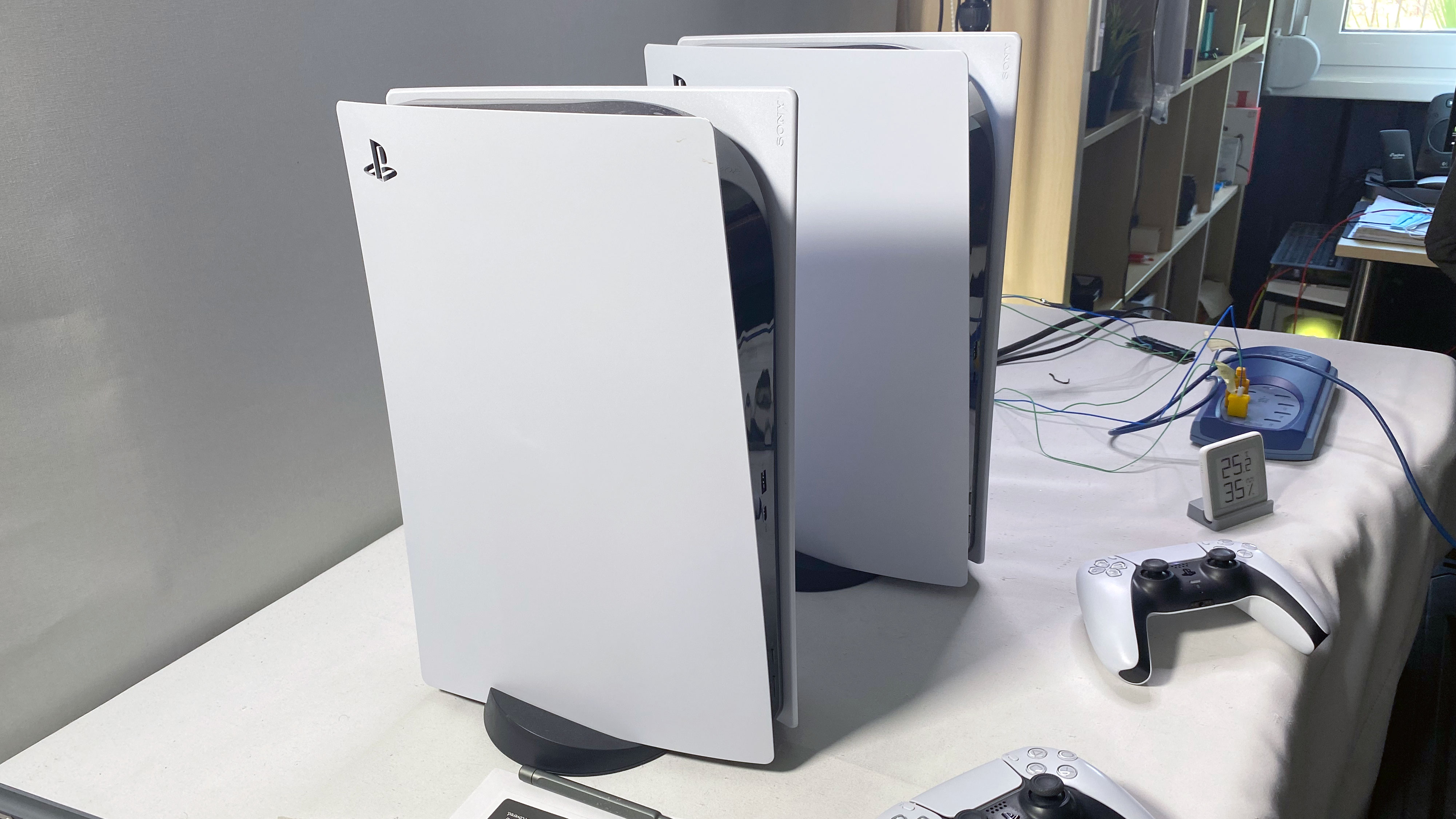
If you don't want to spend on a heat sink and given that the NVMe drive will mostly have to handle read operations, removing the PS5's SSD cover will be enough, as long as you select a fast enough SSD. In our case, the max and average temperatures of the SN850's controller were close to 56 degrees Celsius, with an ambient of 23 degrees Celsius.
Get Tom's Hardware's best news and in-depth reviews, straight to your inbox.
The controller in this drive will lose performance and throttle at temperatures close to 88 degrees Celsius, so there is enough headroom. We had about the same operating average temperatures on the controller by simply removing the cover, with the "heat sink installed and cover on" scenario.
The best you can do if you want the lowest possible SSD temperatures is to install a large heat sink without the cover.

Aris Mpitziopoulos is a contributing editor at Tom's Hardware, covering PSUs.
-
brian532 So, Sony's storage upgrade solution involves removing, losing, the include NVM and replacing while with Xbox you can just add to it? I am surprised MS is not making a big deal about this.Reply -
Erroneuz Reply
No.brian532 said:So, Sony's storage upgrade solution involves removing, losing, the include NVM and replacing while with Xbox you can just add to it? I am surprised MS is not making a big deal about this.
"With its latest firmware, Sony allows you to add your own M.2 SSD to the PlayStation 5 to supplement the console's internal storage. "
Also Sony's solution lets the consumer choose between tons of drives, not locking them down to one expensive option. The only thing surprising me, is that we haven't seen a specific drive branded by PlayStation, but it will properly come, though it's not necessary. -
drd7of14 Would not the cover being removed possibly lead to improper heat dispersion onto the plastic shell of the PS5 console? Even with the heatsink, my concern would be that it might melt the plastic.Reply
Did you measure the temperatures at the top where cover would be and the inner plastic above that? Would be curious to see if this concern is warranted or not.
Secondly - My guess would be that the cover protects the SSD from environmental damage and/or dust accumulation. Not having the cover over the bay may lessen the lifetime quality of your drive.
It would be good to test this over a 3 month period of time with regular use, 1 unit with the cover and 1 without in the same/similar environment if possible. -
Erroneuz You need much higher temperatures for plastic to melt. The cover on or off will not affect airflow. But it can have an effect on dust accumulation, so that's something worth keeping an eye on, if one decides to run without the cover.Reply -
VforV Actually Sony recommends to keep the SSD cover ON, so dust is one of the reasons. They also state better cooling with it on, but this test proves the opposite.Reply
You got it all wrong. It's the opposite actually.brian532 said:So, Sony's storage upgrade solution involves removing, losing, the include NVM and replacing while with Xbox you can just add to it? I am surprised MS is not making a big deal about this.
You don't remove the original SSD, you add another one.
Sony gives you the option to chose from a multitude of offers (cheaper prices or better performance, etc), while MS locks you into a proprietary SSD which is also expensive, more expensive than the options you get with Sony...
There is exactly that, an SSD expansion from Sony for the PS5, but it's not under the Sony name, it's a subsidiary and I forgot the name (google it). I also don't know why they did that instead of using the Sony brand... But the idea is that they do have it.Erroneuz said:No.
"With its latest firmware, Sony allows you to add your own M.2 SSD to the PlayStation 5 to supplement the console's internal storage. "
Also Sony's solution lets the consumer choose between tons of drives, not locking them down to one expensive option. The only thing surprising me, is that we haven't seen a specific drive branded by PlayStation, but it will properly come, though it's not necessary. -
Erroneuz Reply
Yeah I've seen it, it's called Nextorage . To be honest, a company at the size of Sony, I wouldn't be surprised if the Nextorage subsidiary almost runs it's own part of the business. Supply issues can maybe also be why, they maybe don't want a product branded for PS5 out there, if they cant deliver enough of them, considering how much heat they (and pretty much everything else) are getting, because of the supply issues.VforV said:There is exactly that, an SSD expansion from Sony for the PS5, but it's not under the Sony name, it's a subsidiary and I forgot the name (google it). I also don't know why they did that instead of using the Sony brand... But the idea is that they do have it. -
kyzarvs ReplyErroneuz said:No.
"With its latest firmware, Sony allows you to add your own M.2 SSD to the PlayStation 5 to supplement the console's internal storage. "
Also Sony's solution lets the consumer choose between tons of drives, not locking them down to one expensive option. The only thing surprising me, is that we haven't seen a specific drive branded by PlayStation, but it will properly come, though it's not necessary.
There is one on the way:
https://www.tomshardware.com/uk/news/sony-releases-aftermarket-ps5-ssd-under-the-nextorage-brand -
Erroneuz Reply
Read my last post.... :)kyzarvs said:There is one on the way:
https://www.tomshardware.com/uk/news/sony-releases-aftermarket-ps5-ssd-under-the-nextorage-brand -
Alvar "Miles" Udell Honestly they should have just increased the price by $150 and shipped it from the factory with a 2TB drive with no expansion.Reply -
Heat_Fan89 Reply
Games are way too big these days to offer no expansion. I have a PS4 and I have 4GB of storage and it’s almost full of games. Most AAA games today are in the 65-100GB and they keep growing in size especially when hitting 4K.Alvar Miles Udell said:Honestly they should have just increased the price by $150 and shipped it from the factory with a 2TB drive with no expansion.